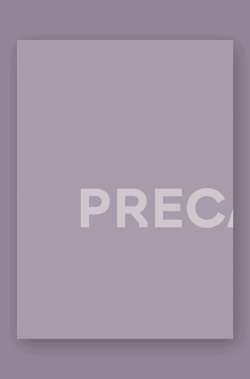Cut and paste: memory & quotation
May 26, 2008
Article written by Xavier González
Poring over all sorts of reviews to prepare and document my article, I suddenly became aware of the manner in which my attention was caught by one project or another. As I look at pictures, examine documents and leaf through magazines, the flow of my reading is arrested now and then by a detail.
I backtrack and my eyes re-examine another fragment. Unconsciously, it is cut out, isolated, scanned and detached from what precedes or follows it. The image belongs to me now, it is set on a shelf somewhere in my memory, ready to be used or already forgotten, but there to re-emerge in my subconscious. There are things that we see and others that we do not see, and as we look at things we sift, separate and memorize them.
Creation as a retrieval process
The creative process is an obscure and complex phenomenon in the course of which a body of memorized and selected images or concepts confront each other, cancel out, superpose or mix to create an alchemic whole. Memory in all its forms plays an active role in this fabrication: innate or acquired, immediately available (conscious memory) or dormant as hidden remnants (amnesic memory). Indeed, neither creation nor quotation-reference appear to be possible without the participation of memory.
To begin a project is to begin by storing things that may be used, selected and mixed. It entails the setting into place of the endless cycle of creation and permanent recycling that leads to the emergence of a new work.
The question of quotation and copying in creation has been a constant theme since antiquity and touches all disciplines and arts: philosophy, literature, painting, architecture, design, fashion, dance, music, video, etc.
Plato evokes it in his Republic when he criticizes the progressive demise of the original work of creation, of which God alone was the author. In the example of the bed he drew attention to the chain of progression that runs from idea to copy, and from copy to copy. ‘…three kinds of bed. One is the natural form of which we may say that God is the creator... then comes a second, that of the carpenter... and then a third, that of the painter’ (1)
The quintessence of quotation is collage, which begins with a process of locating, reconnaissance and highlighting.The chosen part is identified, picked up but not yet grafted. It no longer belongs to the initial work, there is expropriation and re-appropriation of the fragment. It is set aside, stored in memory as part of an available ‘fund of samples’ ready to be used in an system of infinite rearrangement.
Through displacement and re-combination, the fragment acquires new meaning. ‘We can imagine a time when painters will do nothing more than have other people lay on colour, and a time when they will no longer even draw. Collage gives us a foretaste of that time’ (2)
De-contextualized and then re-contextualized, each piece of the puzzle becomes a source of metaphor and metonymy that proceed by association and proximity or by opposition, on both the semantic and plastic levels.
Besides its pictorial mode, the fundamental contribution of collage, considered as the use of things borrowed from ‘external reality’, lies in its raising the question of the physical presence or absence of the artist in the process of fabricating the work, Duchamp’s ‘readymades’ being the classic example.
In literature, the appearance in the 60’s of the ‘open work’ concept developed by the structuralists initiated a critique of the author-demiurge and pointed out the generalized ‘inter-textuality’ that makes every text the palimpsest of another.
Since each book, said Barthes, is made up of ‘multiple writings, derived from several cultures that enter into dialogue, as a parody or a confrontation with others... the reconstituted text is nothing more than a meta-text, a fabric of quotations drawn from countless centres of culture’ (3) What he foresaw as a fatality was ‘the death of the author’.
Today the invention of new technological supports via the Net has totally upended the notion of author and has challenged all ideas of artistic property. The ‘open work’ that. Barthes predicted has become a reality, and if the author is not yet extinct, he or she is an endangered species. With the Web, the world has become one huge network, a rhyzome-like data base. The ‘emerging technocultural environment has encouraged the development of new art forms, which ignore the separation between emission and reception, composition and interpretation’ (4)
Side-tracking, sampling, re-mixing, re-appropriation: with the advent of reproduction works of art have lost the ‘aura’ that Walter Benjamin spoke of, and have become simple manufactured products that enter into a consumer process whereby nothing escapes from ecology and recycling. This phenomenon first touched recorded music, with the invention of the sampler, causing a veritable revolution; since, it has contaminated all the arts.
Between 1986 and 1988, when the first pieces of music created with samplers came out, the ‘American simulationist’ movement developed in parallel, with Jeff Koons, who drew his inspiration from the imagery of folk art, or Sherrie Levine, who exhibited photo-perfect copies of works by Miró, Degas and Duchamp. Douglas Gordon also worked in this movement when he redesigned an icon of cinema, Alfred Hitchcock’s Psycho, simply by changing its duration. Slowed down to last 24 hours, the new work totally changes the dramatic perception. ‘We live in the age of the re-combinatory, the age of recombined bodies, recombined sexual categories, recombined texts, recombined culture’ (5)
‘To make music, you need sounds and when you can’t make them yourself you find them somewhere else: in appearance there is nothing more simple’ (6) The sampler is an electronic memory that is virtually infinite, which enables sounds to be stored, from a single note to a symphony. This fund constitutes a sort of personal library, where works are reduced to an anthology of chosen pieces drawn from the vast reservoir of musical culture.
The work ceases to function as a ‘closed opus’ or a melody and becomes a sum of harmonies and pre-existing sounds.
The sampler is thus the centre of sound memory, a centre where all metamorphoses are possible. It is an abstract place where all the sounds of the world are classified and subjected to changes.
This tool simplifies the work of the DJ, who then needs only to physically manipulate the vinyl records in order to modify sounds, slowing them down, warping them or passing them into a loop. These manipulations are necessary to the construction of a durable rhythm by the mixing of short breaks.
The re-appropriation of knowledge has always been present in human activity, in different forms, but the advent of the sampler has upset the pre-existing metaphysical relationship between creation and memory. Indeed, by faithfully retrieving recorded pieces ready to be recombined, the memory no longer works as a catalyst. The combined effect of the dormant memory/recall binomial implements internal re-composition, a metabolism that plays on memory by default. But the sampler, on the contrary, pushes the process of fabrication to the surface, turning it into a conscious act, like collage, thus relating it to an aesthetic of superposition, medley and fusion.
DJ
The DJ is the emblematic figure of sampling: a new kind of artist, who has succeeded in merging the roles of creator, spectator and programmer; he experiments or develops the culture of the receiver that he has constituted.
The notion of ‘inter-textuality’ mentioned above is patent here. The traditional image of the artist is readily abandoned in favour of the status of ‘operator’ or ‘passer’.
This attitude towards universal musical heritage indicates a new type of action that consists in positioning one’s self with regard to the perpetual flow of information. Needless to say, it is directly linked to the development of computer culture. The DJ is the best illustration of this new approach by which the selection and combination of stored pieces reveals its potential for the creation of new art forms. He creates music in real time by mixing tracks of existing music with the help of electronic equipment. His manipulations are based on his exceptional sound memory and musical culture, and on his ability to pinpoint, classify and control tempos and follow-ons. Using several turntables he monitors the sounds produced by vinyl grooves via his head set. But merely selecting and combining are not enough: the art of the DJ is essentially his ability to mix, that is to say his capacity to put chosen pieces together in a rich and sophisticated manner.
The technique of rupture developed by collage has thus been replaced by a quest for continuity, elision, the invisible seam and erasure. This system of addition creates hybrid, ‘molecular’ objects that shift the work of art from the solid towards the liquid state, effacing all scars.
Architecture, quotation and model
In architecture as in all the arts, the copy has long been at the core of academic teaching. To teach was to pass on knowledge based primarily on the imitation of antique models. From Vitruvius to Vignole, countless treatises of architecture taught students the method by which to draw capitals and the rule of the three orders.
The grand tour to Italy and Greece, and later to the East, was an initiatory journey for trainee architects, the fountainhead of inspiration and ornament. Sketch books kept the record of drawings, urban scenes, historic buildings, measured drawings of ancient ruins, details, etc. This reservoir of information formed a sort of active memory, a body of iconographic fragments, something in the manner of the sampler. Sketch books made by Le Corbusier and Aalto are contemporary examples of this re-use, and of the ‘memory aid’ for knowledge and reappropriation.
Today, what with the existence of scores of international reviews, the diffusion of architectural reportage represents a new source of raw material, since architects too have become insatiable consumers of images.
It is thus often extremely difficult to trace the memory of a project, because the conscious or unconscious sources are both manifold and intertwined. Indeed, the project is not a linear process: things appear, disappear, confront each other or merge to respond to a set of data. As in the work of the writer in production mode, the project grows out of a sum of separate units, materialized on note slips, which are simultaneously quotes and non-quotes The actual task of writing thus entails re-writing whereby disparate and discontinuous elements are turned into a coherent whole, orderly and comprehensible. All writing is collage, quotation and commentary: meaning comes later Model, inspiration, disciple, reference, tribute, interpretation, displacement, analogy, simulation, metaphor, imitation, copy, borrowing: quotation takes on many forms and attains many different degrees in reading and sense.
My intention is not to produce a comprehensive inventory of all the types of quotation, or establish the pedigree of certain projects, but to point out the most elementary examples.
The icon
The question of the icon has to do primarily with a relationship of continuity, there is a quest for fusion whereby the creator enters into a rapport of direct affiliation with a form or a current of thought. The system quoted is caught in an intellectual or mimetic stance, and similarity to it is patently a part of this appropriation.
In ‘derived objects’ we find certain physical characteristics borrowed from systems or reference-objects. They are so to speak the ‘good images’ that bear a close resemblance to the original idea.
Intellectual affiliation is often an issue with architects, since it enables them to integrate a ‘family of thought’. The intellectual link is formed with the designated ‘spiritual’ father, who passes on a heritage with which the most gifted followers will constitute their own lexicon as they gradually move away from the model. We are reminded of Arata Isozaki, with the example of the human body in which each part is like a zone of influence, the penis-genitor being Kenzo Tange. Or there is Louis Kahn and Mario Botta: where the formal and spatial writing of the former provided the latter with his own grammar, a poetic, constructive and aesthetic system that Botta gradually transformed to forge his own language.
The example of Philip Johnson’s Glass House provides an interesting aside. Johnson was influenced by the work of Mies van der Rohe to the point of a total identification with his master, and even believed for a while that he might surpass him. But when Mies designed the Farnsworth House, to a similar brief and on a comparable site as the Glass House, he gave his disciple a lesson in architecture, making evident his shortcomings.
Rem Koolhaas’s passion for Mies is also well known, and many critics have descried the hand of the master in the Dutch architect’s ‘villa in the woods’: elongation, the patio, the relationship to the ground, the curtains, etc. But unlike Johnson, Koolhaas has not sought fusion, on the contrary, there is voluntary perversity in his toying with the model. ‘We have books and photos that compose the chapters of the inventory, but we don’t even need to look at them. We play on what is most obvious, with quotations - and I’m not going to tell you which ones you can play with too! We make up a sort of catalogue of prototypes.
And sometimes we use them in negative, sometimes in positive. Sometimes in quotation, sometimes as critique… Or we can completely demolish the prototype, or keep the pieces, or turn them around!’ (7)
The icon is a quotation that engages the person who quotes. Pastiche and reminiscence may also intervene at this level.
The feature
The feature is related to quotation by inclusion. There is displacement and re-contextualization of part of a work. This ‘cut & paste’ job may be entire or it may be subject to modifications, reinterpretation or updating, but it is always identifiable –indeed, this is its raison d’être.
The quotation of an author is explicit and referenced, it is a kind of homage, and identification with the work quoted is sought after as a cultural guarantee; in a way, the feature lies between the inverted commas of architecture.
Features run like recurrent themes through the entire history of architecture, as this example taken from the work of Alvaro Siza will show. In his architectural writing, Siza often uses the theme of the base, a sort of strip of stone, ceramic or marble that serves to seat the building on the ground. This system, which is borrowed from vernacular architecture, plays on effects of material, brightness or dullness, and was originally meant to protect the base of the building. But with Siza, as was the case with Adolph Loos, we find a similar treatment of walls in interior spaces: vernacular has infiltrated sophisticated architecture.
If we establish a parallel between the Avelino Duarte House and the Müller House, we are struck by their similitude. Both houses have in common the search for interiority, extreme simplicity of volumes and the use of a marble skin that envelops and dresses walls, columns, stairs and fireplace. The reference to Loos in Alvaro Siza’s work is explicit, but in this example the feature is identifiable.
The reference
Like the feature, the reference is also linked to the process of identification, it designates its sources and constitutes the beginning of a story: the incipit. The reference is more general than the feature and may designate indistinctly a work, an architect, a culture, a current of thought or another art form, such as cinema. The aesthetic system may focus on a specific period in the work of an architect and does not necessarily imply a relationship of continuity: Japanese, constructivist, neo-regional influences, and so on.
The reference to art is also very present in works by certain architects. It manifests itself in various ways, whether through a particular methodology, as in Herzog and de Meuron’s frequent allusions to Beuys, or in a more direct or explicit way, as in the case of the silkscreen printed pieces presented in the Ricola project, which were worked up from a photo by Blossfeldt but handled in the manner of Warhol by displacement and addition.
In the project by Adolph Loos for the Chicago Herald Tribune head office competition, the reference to the antique assumed surprising relevancy. His proposal, heralding the manner of Pop artists, played on mutation and transformation in the perception of an object subjected to a sudden change of scale. The tower is in fact a gigantic Doric column, sublimated as an ‘elementary particle’ of the antique model.
Analogy
The most emblematic figure using quotation as analogy is undoubtedly Aldo Rossi, as is apparent in his text entitled ‘the analogous city’8. The two axes of his teaching are based on typo-morphology and reference. By extension, analogous architecture extends the identification of architecture to a place and its memory, it bears witness to context taking into account both its regional and local qualities.
It does not take the form of an exceptional piece of design work but rather in anonymous architecture, seemingly devoid of quality, or in the vernacular themes that form everyday images stamped by ordinariness, such as those captured in the photographs by Thomas Ruff.
The influence of Aldo Rossi, or the visceral attachment to place and culture, remains perceptible at many different levels in contemporary Swiss architecture. It is also present in young British architecture, where the accent is more on the idea of permanence, cultural continuity and on archetypes of typology in habitat.
Parallel to Rossi’s investigation of analogy, the work of Robert Venturi follows a similar vein of thinking, but while Rossi is more concerned with the context of the historic city, Venturi is stuck on street-level culture. The use in his projects of the notion of the ‘decorated shed’ enables him to quote with irony and to mark a distance between the architecture of sign and artifice, with the collage and placarding of the forms so characteristic of buildings and housing in suburban USA.
Simulacrum
If we describe the simulacrum as a copy of a copy, an infinitely degraded icon, a resemblance that is wholly distended, we miss what is vital: the difference of nature between simulacrum and copy, the aspect by which they form two halves of a division.’ (9)
The copy is anathema, and via the media we often hear of an author or an architect accusing a colleague of plagiarism. Re-writing fascinates and frightens because it touches the limit where writing itself degenerates into mere copying.
The copy may be an exact reproduction of the original, or it may be re-writing, or evocation –this is where simulacra appear.
The theme of the copy, as mentioned previously, is recurrent in the history of architecture, and in this respect it is interesting to cite the case of the Errazuris House mentioned by Le Corbusier is Oeuvres complètes, 1929-1934. Corb refers to a house built in suburban Tokyo in 1933 and published in the Architectural Record, accusing its architect, Antonin Raymond, of having copied his project designed for a Chilean client in 1930. ‘No mistake about it…’ wrote the master, ‘readers should not be taken in because this is not our house but well and truly a creation by M. Raymond.’ (10)
The house was in fact a perfect copy: section, elevations, site –all the components are identical to the original. The spirit and the letter are also present, to the point that Corb even seemed a trifle flattered by this perfect copy: ‘Be that as it may, it gave us real satisfaction to see ideas dear to us take form with so much taste.’ (11)
The copy can also be a simulacrum, that is to say an extraction of signs that does not establish a relationship of thought or descent with the icon object. Simulacrum occurs where resemblance is achieved by an assemblage of signs that are meant to represent and imitate the basic properties or qualities of the reference object.
This similitude is an illusion, a mere appearance, and it is achieved without recourse to the idea. The most explicit example of this is no doubt the Las Vegas strip, which is an international digest of collective and cultural memory summed up in a body of signs.
Combinatory: the DJ-architect
Communication and representation are the fundamental components of architectural expression. It is interesting to note that the contribution of new computerized tools and the central place occupied by Web culture have affected the way architecture is perceived and produced. The phenomenon of recycling that began by contaminating art and music is now perceptible in architecture schools.
In this we see the direct influence of techno culture with its technique of fabricating by manipulation of existing elements. The creative process has been replaced by selection from a menu, which supposes that designers are able to find in their own data ‘libraries’ the necessary pieces, models, textures, different types of spaces and even reference details, etc.
As in music, the manipulation of forms, fragments and space implies an ability to think in terms of alloying, combination and following on, where architectural works run one into the other and play in turn alternate roles subject and object.
Witness the library designed by 4th year student Olivier Donnet, which attests to this dexterity in making and recombining. The base composed of a central core harks back to the Eberswalde library by Herzog and de Meuron, while the section quotes Louis Kahn’s Exeter library. The exposed facades are made up of a double skin, the outer layer a ‘cape’ of metal already used by Jean Nouvel. All the glazing is silkscreen-printed with texts, a quirk very much in vogue.
Another example is a perspective by student Joana Monplaisir, who proposes a ‘type’ of analogous space with neither project nor plans. Her drawing introduces us to a simulated atmosphere worked up from an existing backdrop filled out by an accumulation of advertising boards, in the manner of Archigram’s ‘it could be like this’ (12)
Another example of collage is the project by the collective EPIS. The perspective shown here is taken from a competition organised by the city of Strasbourg which was open to students. The work was based upon the ensemble of social housing and the restoration of their facades.
It is important to note that in this image the collage gives the project an air of ‘architectural remix’. The architectural magazines take the role the DJ’s vinyl records, while the scanner and the software Photoshop replace the record player and sampler.
These three examples illustrate a new logic at work in computer culture. Rarely created ex nihilo, the objects derived from the new media are more often than not assembled from ready-to-use parts. Like the DJ, the architect consumes and produces architecture and as a producer he or she is nothing more than a simple transmitter for whoever comes after. The vital part of designing is no longer found in the finished product, the masterwork, or even in its process of elaboration. It lies in the multiplicity of trajectories undertaken by the work.
Article published in a+t 17. Memory II
Notes
1 Plato, La République, X, 597 d. Folio-Essais. Ed. Gallimard. Paris, 1993
(2) Art Studio n° 23, winter 1991: Le Collage, page 15
(3) Roland Barthes The death of the author in Stephen Heath ed. Image, Music, Text, New York, Farrar, Strauss and Giroux, 1977, page 142
(4) P. Lévy, L’intelligence collective, pour une anthropologie du cyberespace, La Découverte ed. Poche, 1997, (quoted in an article by N. Bourriaud, La Mutuelle des formes, Art Press, offprint, page 164)
(5) Catalogue of the exhibition at the Pompidou Centre, Nov.- Dec. 2000 Montersampler. L’echantillonage généralisé. La propriete c’est le vol, Y. Beauvais, M. Bouhours, page 207 Jeremy Deller Theory and Practice 1998 Art Press n° 19
(6) Art Press, número especial Techno, anatomie des cultures électroniques. 1998. Courtesy of A. Laumonier. Página 83. J. Oswald, Creatigality in Nomad’s Land, n°3 primavera-verano, 98 Art Press, special issue on techno, Techno-Anatomie des cultures électroniques. 1998 Courtesy of A. Laumonier, page 83. J. Oswald, Creatigality in Nomad’s Land, n°3, spring-summer 98
(7) Le Corbusier’ skechts book. China and Japan Le Corbusier Oeuvres Complètes 1910-29. Les Editions d’Architecture. Zürich, 1964. Página 21
(8) Aldo Rossi, La arquitectura análoga in Construccion de la ciudad 2C 1975. Pages 8-11
(9) Antoine Compagnon, La seconde main. Ed. Du Seuil Paris, 1979. Page 116
(10 and 11) Le Corbusier, Oeuvres Complètes 1929-1934, Les Editions d’Architecture, Zürich, page 58
(12) Olivier Donnet & Joana Monplaisir are 4th year students at the Ecole d’Architecture Paris-Malaquais (Ecole des Beaux Arts) in the ‘Stratégie, Modeles, Medias’ group directed by X. Gonzalez and B. Hubert. This studio proposes an investigation of the modalities by which the architectural project is thought out and represented today. This entails an analysis of the design process including conception/modelization /fabrication. There was no set exercise in the programme


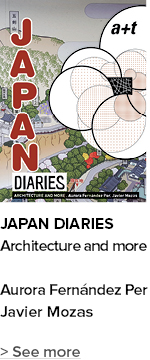


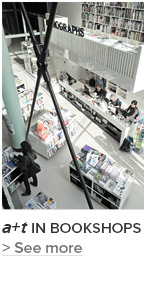
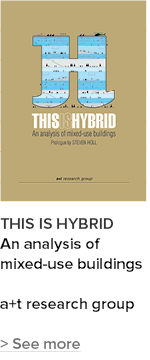




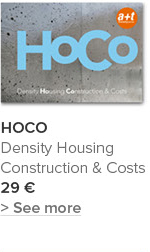
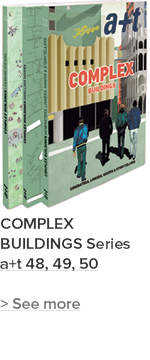


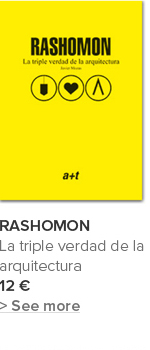
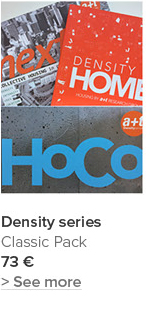





 I've read and agree to
I've read and agree to 


